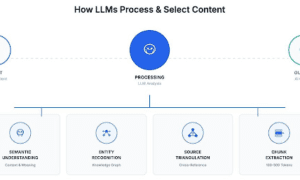Companies without sustainable business practices risk falling behind their competitors. According to a Capgemini report, 77% of businesses that embraced sustainable practices experienced more brand loyalty, and 63% experienced higher revenues. Such businesses would also benefit from lower operational costs, better stakeholder relationships, and improved investment appeal. So, it’s no surprise that a company’s valuation is strongly influenced by the sustainability of its business model.
In this article, we’ll explore what exactly sustainability is, its impact on cost structures, the benefits it offers businesses and its overall impact on business valuations.
What is sustainability?
A business does not operate in a vacuum. It interacts and forms relationships with customers, employees, business partners, and investors. Additionally, it receives natural resources from and has an impact on the environment. Thus, a company can sustain itself only if it does not end up destroying the ecosystem that sustains it.
In 2004, the United Nations congealed this idea into the environmental, social, and governance (ESG) framework, which provides a tangible way to assess whether a business is sustainable or not.[1] This framework centers around three key pillars or questions, which are:
| Pillar | Question | Description |
| Environment | How does business impact the planet? | Business practices are truly sustainable only if they don’t end up polluting the planet, otherwise, the business would eventually lose its supply of natural resources. |
| Social | How does business impact people? | A business must foster positive relationships with employees, suppliers, partners, and communities to maintain its reputation or risk being replaced when a better alternative presents itself. |
| Governance | How ethically is the business managed and controlled? | Ethical management, recognition of key contributors, and accountability to shareholders are essential for sustained access to funds and talent. |
How does a business’ sustainability impact its valuation?
To understand the impact of sustainability on business valuations, let us understand the cost of adopting sustainable business practices and their benefits. Then, we shall understand how these practices can be quantified in business valuations.
What is the cost of sustainability?
Here we will briefly discuss the cost of adopting renewable sources of energy and the cost of waste management, the two major costs associated with sustainable business practices.
-
Cost of adopting renewable sources of energy
Renewable energy not only has lower marginal costs but also requires much less capital expenditure. In the US, the average marginal cost of producing solar energy is $24 per megawatt hour, while that of fossil fuel-based power plants is $36 per megawatt hour.
Advancements in renewable energy technology have substantially reduced initial investment costs, making renewable energy more cost-competitive than ever before.
For instance, a single solar panel with an output of 400 watts costs between $120 to $200.[2] This brings the investment cost of 1 megawatt via solar energy to about $300,000 to $500,000.
In contrast, building a coal-fired power plant typically costs between $1.5 million and $3.6 million per megawatt, depending on whether the plant is subcritical or supercritical.
Thus, renewable energy is not only a more environmentally conscious choice but also a financially responsible one. Even though most businesses are unlikely to build their own power plants, these cost dynamics enable them to negotiate more favorable prices with renewable energy providers.
-
Cost of waste management
Solid waste management is a major challenge that requires a holistic approach rather than a one-size-fits-all solution due to the varying types of waste being generated by different industries. As a result, the cost dynamics of environmentally conscious waste management are challenging to generalize.
An industry that mainly produces recyclable waste will face lower costs than the industry producing non-recyclable waste. The cost dynamics would be much different for a startup producing hazardous waste than for a startup producing compostable waste.
In a World Bank article, it was noted that in a high-income economy like the United States, the cost of solid waste management borne by the user would be $170 per ton. However, this is simply a generalized figure that may not apply to most industries.
What are the benefits of sustainability?
The key benefits of adopting sustainable business practices are as follows:
- Lower costs
As we noted earlier, adopting renewable sources of energy can prove cost-efficient in the US, even from a capital expenditure standpoint.
- Higher employee retention
Since a justly governed organization is more likely to recognize the contributions of its employees, it will benefit from high employee retention rates. Not only does this reduce talent shortage, but it also reduces overall employee compensation costs.
- Higher customer retention
According to a Capgemini report on how sustainability is changing consumer preferences, 77% of respondents reported higher brand loyalty on account of sustainable business practices. Not only that, 63% of respondents also reported these practices driving higher revenue.
- Deeper relationships with business partners
As regulations around ESG practices become more comprehensive, having ESG-compliant business partners is going to become just as important as being ESG-compliant. If your business partners with European entities, you may already be experiencing the benefits of ESG compliance in securing partnerships, as the Corporate Sustainability Due Diligence Directive (CSDDD) mandates that companies assess and mitigate ESG risks across their supply chains.
- Attracting investors
With climate change snowballing into a more pressing issue day by day, investors have become conscious of the impact of their portfolio companies on the environment. Recognizing this shift in investor priorities, the Securities and Exchange Commission (SEC) now requires registrants to disclose their climate impact in annual reports and registration statements, starting with annual reports for the year ending on 31st December 2025.
How do we quantify sustainability in business valuations?
Adopting sustainable business practices can enhance your business valuation in two key ways. First, they can lead to lower operational costs over time, unless your industry necessitates costly waste disposal. This would improve your historical free cash flow to equity. Secondly, it lowers the overall risk profile of your business, which has the following benefits:
- Lower discount rates
A sustainable business benefits from higher employee retention, brand loyalty, and investor demand and, hence, has a lower risk profile than other businesses. As a result, it will attract a lower discount rate than other businesses, which directly increases its business valuation.
- High valuation multiples
Sustainable businesses attract a much broader pool of investors, and hence, a well-performing sustainable business is much more desirable than a comparable non-sustainable business. This increased demand results in higher valuation multiples.
- Low borrowing costs
With a lower risk profile, sustainable businesses can secure more favorable interest rates, reducing financing costs compared to less sustainable counterparts.
- Low variance in revenue projections
Stronger brand loyalty translates into more predictable revenue streams, minimizing fluctuations and enhancing long-term financial stability.
Measuring value beyond the bottom line!
Sustainable business practices are no longer just an obligation. With technological advancements and shifts in consumer and investor preferences, they have evolved into strategic advantages. From reducing costs and strengthening partnerships to enhancing investment appeal and valuation multiples, sustainability has some undeniable, tangible benefits.



































